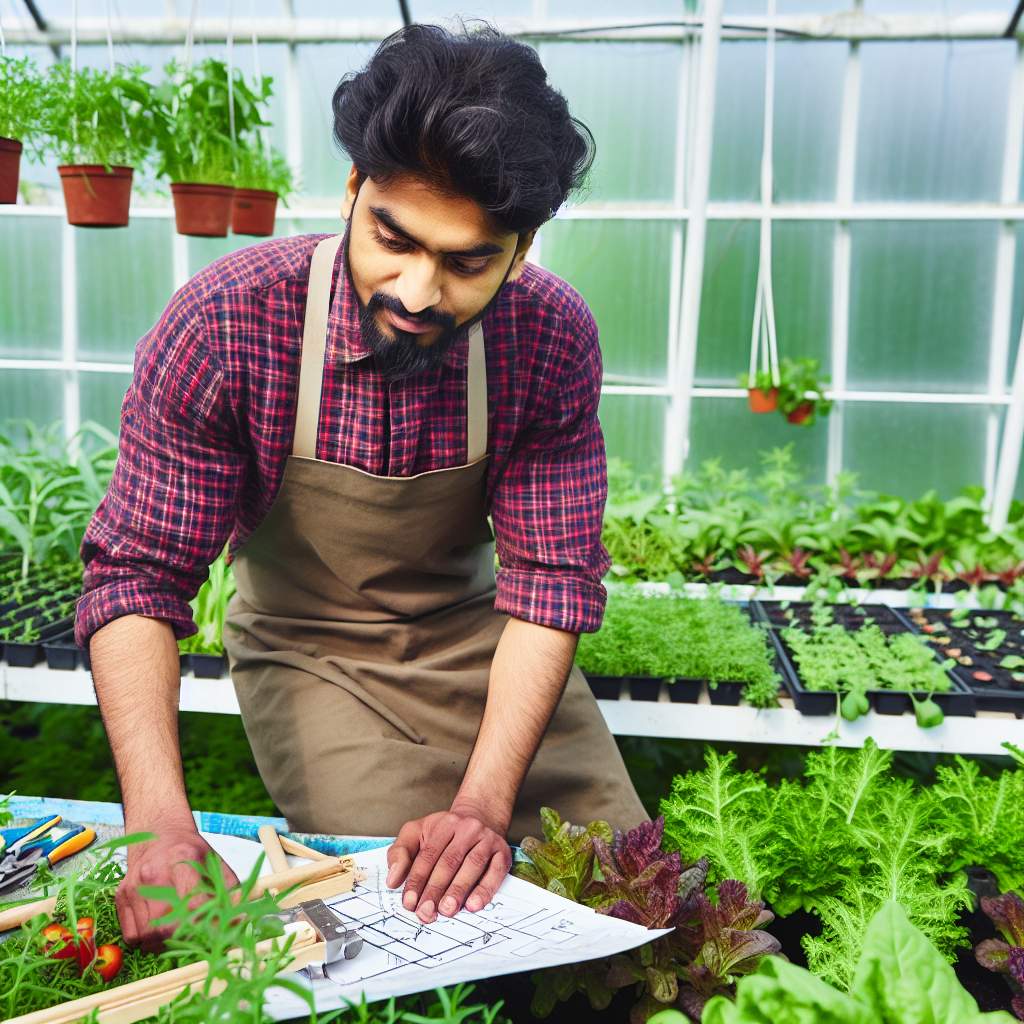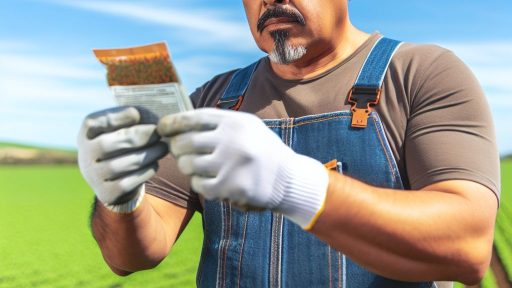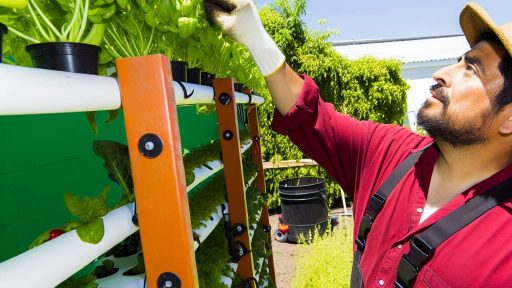Choosing the Right Greenhouse for Your DIY Projects
Selecting the perfect greenhouse is crucial for successful DIY gardening.
You should start by considering the size of your garden space.
A larger greenhouse offers more options for plant varieties.
However, a smaller structure can still be effective for specific projects.
Next, evaluate your climate and weather conditions.
Keep in mind that different materials offer varying insulation properties.
For instance, glass greenhouses allow maximum light but may become too hot.
On the other hand, polycarbonate structures provide better insulation.
Additionally, think about the greenhouse orientation.
A south-facing setup maximizes sunlight exposure throughout the day.
Consider also the ease of access and ventilation needs.
Pop-up structures can be practical for DIY experiments.
Furthermore, sturdiness and durability are important for longevity.
Next, assess the cost of the structures you’re considering.
A budget-friendly option may be appealing but should meet your needs.
Transform Your Agribusiness
Unlock your farm's potential with expert advice tailored to your needs. Get actionable steps that drive real results.
Get StartedEvaluate any additional features such as shelving or water systems.
Ultimately, choose a structure that aligns with your gardening goals.
Lastly, read reviews and gather feedback from fellow gardeners.
Their experiences can guide you towards the best greenhouse choice.
Careful consideration will lead to fruitful DIY gardening adventures.
Essential Tools and Materials for DIY Greenhouse Projects
Tools Required for Building
Start with a hammer for assembling frame structures.
Use a saw to cut wood or PVC materials accurately.
A level ensures your greenhouse is built straight.
A drill will help secure components with screws.
Consider a measuring tape to gauge lengths properly.
Gloves also offer protection while handling materials.
Additionally, safety goggles protect your eyes during cutting.
Materials for Construction
Choose treated wood for durability and moisture resistance.
PVC pipes are lightweight and easy to work with.
Polycarbonate panels provide excellent insulation.
Clear plastic sheeting is ideal for budget-friendly solutions.
Wire mesh can support your plants as they grow.
Use screws and brackets to strengthen your structure.
Finally, consider mulch to regulate soil temperature effectively.
Starting Small: Basic Accessories
Gather pots for planting small seeds or seedlings.
Use trays to catch excess water and prevent mess.
Also, obtain a watering can for easy irrigation.
Consider a thermometer to monitor greenhouse temperature.
A humidity meter gauges moisture levels effectively.
Showcase Your Farming Business
Publish your professional farming services profile on our blog for a one-time fee of $200 and reach a dedicated audience of farmers and agribusiness owners.
Publish Your ProfileLastly, small hand tools simplify plant care tasks.
Creating Vertical Gardens: Maximizing Space in Your Greenhouse
Vertical gardening enables you to grow plants upwards instead of outwards.
This method is perfect for small greenhouse spaces.
It allows you to maximize the area you have available.
Moreover, vertical gardens can enhance aesthetic appeal.
Choosing the Right Plants
Selecting appropriate plants is crucial for successful vertical gardening.
Herbs like basil and mint thrive in vertical setups.
Additionally, vegetables such as lettuce and peppers work well.
Consider using flowering plants for added beauty and variety.
Designing Your Vertical Garden
The design of your vertical garden should suit your greenhouse’s layout.
Use trellises, wall planters, or hanging pots to save space.
These structures provide support for climbing plants.
Ensure that your design allows for easy access and maintenance.
Building Structures for Vertical Gardens
Building structures can enhance the functionality of your vertical garden.
Start with a simple wooden frame for climbing plants.
Consider using recycled materials for an eco-friendly touch.
Make sure the framework is sturdy to support growing plants.
Watering and Maintenance Tips
Proper maintenance is vital for the success of a vertical garden.
Ensure that each plant receives adequate water and nutrients.
Use a drip irrigation system for efficient watering.
Regularly check for pests and diseases to keep plants healthy.
Harvesting and Enjoying Your Vertical Garden
Harvesting your plants should be frequent to encourage growth.
Carefully pick leaves and fruits without damaging the plants.
Enjoy the fresh produce from your vertical garden.
Incorporate them into meals for added flavor and nutrition.
Learn More: Sustainable Agroforestry Practices for Small-Scale Farmers
DIY Hydroponic Systems: A Step-by-Step Guide
Understanding Hydroponics
Hydroponics is a method of growing plants without soil.
Instead, it uses nutrient-rich water solutions.
This technique promotes faster growth and higher yields.
Moreover, it uses less water than traditional farming.
Choosing Your Hydroponic System
There are several types of hydroponic systems available today.
Each system has its own benefits and challenges.
- Deep Water Culture (DWC)
- Nutrient Film Technique (NFT)
- Wicking System
- Vertical Hydroponics
Evaluate your space and budget carefully.
Choose a system that fits your gardening goals.
Gathering Your Materials
You will need a variety of materials to set up your hydroponic system.
Commonly required items include:
- Water reservoir
- Nutrient solution
- Grow lights
- Net pots
- Growing medium
Make sure you source high-quality materials.
This will ensure the best results for your plants.
Setting Up Your Hydroponic System
Begin by assembling the components of your chosen system.
Follow the specific instructions for your hydroponic setup.
Showcase Your Farming Business
Publish your professional farming services profile on our blog for a one-time fee of $200 and reach a dedicated audience of farmers and agribusiness owners.
Publish Your ProfileEnsure all connections are secure and leak-free.
Next, fill the reservoir with water and add nutrients.
Adjust the pH level to suit your plants’ needs.
Planting Your Crops
Now, it’s time to plant your crops.
Fill net pots with your chosen growing medium.
Place seedlings into the net pots carefully.
Make sure the roots can access the nutrient solution.
Monitor your plants regularly for growth.
Maintaining Your Hydroponic System
Sustainable upkeep is vital to a successful hydroponic garden.
Check the nutrient levels and pH frequently.
Replace the nutrient solution every two weeks.
Additionally, keep an eye out for pests and diseases.
Implement preventive measures as needed.
Harvesting Your Crops
Harvesting is one of the most rewarding steps.
Once your plants reach maturity, carefully cut them from the roots.
Use clean tools to avoid contamination.
Enjoy your fresh, healthy produce!
Discover More: The Role of Microgreens in Sustainable Urban Farming Practices
Building Custom Shelving Units for Efficient Plant Storage
The Importance of Shelving in a Greenhouse
Shelving units maximize your greenhouse space effectively.
They provide organization for various plants and supplies.
Using shelves increases accessibility to your plants.
Efficient storage helps prevent overcrowding.
Moreover, it encourages healthier plant growth.
Choosing the Right Materials
Select materials that are durable and weather-resistant.
Wood, metal, and plastic are common options.
Pressure-treated wood offers good resistance to moisture.
Metal shelves provide robust support for heavier plants.
Consider using recycled materials for an eco-friendly option.
Designing Your Shelving Units
Begin by measuring your greenhouse space carefully.
Ensure the shelves allow for proper air circulation.
Consider adjustable shelves for versatility.
Incorporate a tiered design to maximize sunlight exposure.
Plan for easy access to all levels of shelving.
Building Your Shelving Units
Gather all necessary tools and materials before starting.
Common tools include saws, drills, and screwdrivers.
Begin by cutting your chosen materials to size.
Assemble the frame securely, ensuring stability.
Add shelves evenly spaced to accommodate various plants.
Finishing Touches and Maintenance
Sand the edges to smooth out any rough spots.
Apply a waterproof sealant to protect the wood.
Showcase Your Farming Business
Publish your professional farming services profile on our blog for a one-time fee of $200 and reach a dedicated audience of farmers and agribusiness owners.
Publish Your ProfileRegularly inspect your shelving for any signs of wear.
Maintain cleanliness to prevent pest infestations.
Enjoy the organizational benefits of your new shelving units.
Delve into the Subject: Seasonal Gardening for Greenhouse Farmers

Setting Up an Automatic Irrigation System for Your Greenhouse
Understanding the Importance of Irrigation
Effective irrigation delivers essential moisture to your plants.
It ensures consistent growth and healthy yields.
Moreover, automatic systems reduce manual labor in greenhouse management.
Choosing the Right Components
Selecting the right components is crucial for your irrigation system.
Consider using a timer to automate watering schedules.
Additionally, choose a pump that matches your water source’s capacity.
Pipes and hoses must be durable and appropriately sized for your setup.
Designing Your Irrigation Layout
The layout impacts the efficiency of water distribution.
Map out the placement of plants and plan your water lines accordingly.
Ensure each plant receives adequate coverage from your irrigation system.
Installing the System
Begin the installation by setting up the water source.
Install your pump and connect it to the water source firmly.
Next, lay down pipes or hoses according to your design plan.
Secure all connections with appropriate fittings to prevent leaks.
Programming the Timer
Setting up the timer is a simple yet vital step.
Enter the specific watering schedule based on your plants’ needs.
Adjust timing based on season or plant growth stages for optimal results.
Testing the System
Once installed, it’s crucial to test your system.
Observe the water distribution to each plant carefully.
If needed, adjust the layout or timing for improved efficiency.
Maintaining Your Irrigation System
Regular maintenance is necessary to keep the system functioning optimally.
Inspect for clogs, leaks, and any wear and tear regularly.
Winterize your system to protect it from harsh weather conditions.
Uncover the Details: Indoor Gardening Tips for Small Spaces in Urban Farming
DIY Pest Management Solutions for Greenhouse Plants
Understanding Common Greenhouse Pests
Greenhouse pests can severely affect your plants’ health.
Common pests include aphids, whiteflies, and spider mites.
Identifying pests early is crucial for effective management.
Natural Remedies for Pest Control
Implementing natural remedies helps maintain a healthy ecosystem.
Consider using neem oil as an organic pesticide.
Essential oils can also deter various insects.
For instance, peppermint and lavender oils repel aphids effectively.
Creating Homemade Insecticidal Soap
Formulate a simple insecticidal soap at home.
Combine one tablespoon of liquid soap with water in a spray bottle.
This mixture targets soft-bodied insects like aphids.
Spray directly on the affected plants for best results.
Utilizing Beneficial Insects
Introduce beneficial insects to your greenhouse environment.
Showcase Your Farming Business
Publish your professional farming services profile on our blog for a one-time fee of $200 and reach a dedicated audience of farmers and agribusiness owners.
Publish Your ProfileLadybugs and lacewings feed on harmful pests.
These insects can significantly reduce pest populations naturally.
Ensure a steady food source to keep them around longer.
Implementing Traps and Barriers
Physical barriers provide an effective way to control pests.
Use insect netting to protect vulnerable plants from pests.
Sticky traps can capture flying insects without chemicals.
Place these traps strategically throughout your greenhouse.
Regular Monitoring and Maintenance
Regularly inspecting your plants is key to effective pest management.
Check for signs of infestations, such as yellowing leaves or webbing.
Maintain cleanliness in the greenhouse to prevent pest attraction.
Remove any dead plants or organic matter regularly.
Employing Companion Planting Strategies
Companion planting can deter pests naturally.
Some plants repel insects while others attract beneficial ones.
For instance, marigolds repel nematodes and aphids effectively.
Research compatible plants to enhance your garden’s health.
Creating a Climate-Controlled Environment
Importance of Ventilation
Ventilation plays a crucial role in greenhouse farming.
It helps regulate temperature and humidity levels.
Good airflow prevents the buildup of harmful mold and pests.
Additionally, it ensures healthy plant growth.
Types of Ventilation Systems
There are two primary types of ventilation systems.
Natural ventilation relies on wind and temperature differences.
Mechanical ventilation uses fans for controlled airflow.
Each system has its benefits based on specific greenhouse designs.
Setting Up Ventilation
Begin by assessing your greenhouse size and design.
Identify areas that require airflow, such as the plant tops.
Placement of vents should allow for cross-ventilation.
Consider adding automated systems for convenience.
Heating Techniques for Greenhouses
Maintaining consistent warmth is essential in colder months.
Choose a heating method based on your energy resources.
Popular options include electric heaters, propane, and gas systems.
Solar heaters are an eco-friendly alternative.
Insulating Your Greenhouse
Insulation helps retain heat during chilly nights.
Use materials like bubble wrap or thermal blankets efficiently.
Ensure all gaps and seams are sealed tightly.
This reduces heat loss and lowers energy costs.
Monitoring Temperature and Humidity
Invest in a good thermometer and hygrometer for monitoring.
Regular checks will help maintain optimal conditions.
Consider installing automatic sensors for real-time updates.
This technology can alert you to critical changes.
Additional Tips for Climate Control
Regularly inspect your greenhouse for any leaks or issues.
Showcase Your Farming Business
Publish your professional farming services profile on our blog for a one-time fee of $200 and reach a dedicated audience of farmers and agribusiness owners.
Publish Your ProfileTrack weather forecasts to prepare for temperature changes.
Utilizing shade cloth can help regulate heat in summer.
Lastly, ensure proper watering practices to maintain humidity.
Additional Resources
USDA Opens People’s Garden Initiative to Gardens Nationwide …
Is opening a nursery/garden center a worthwhile business venture …




